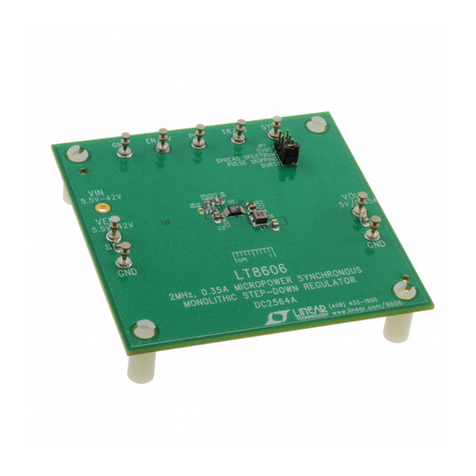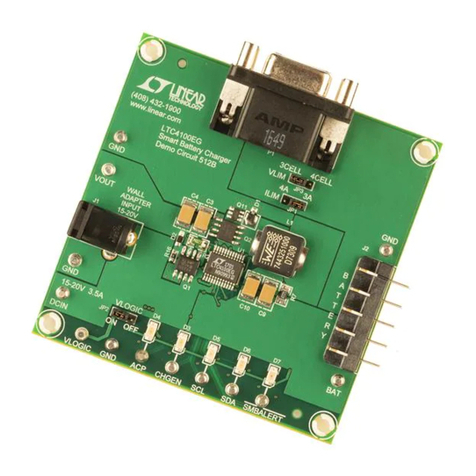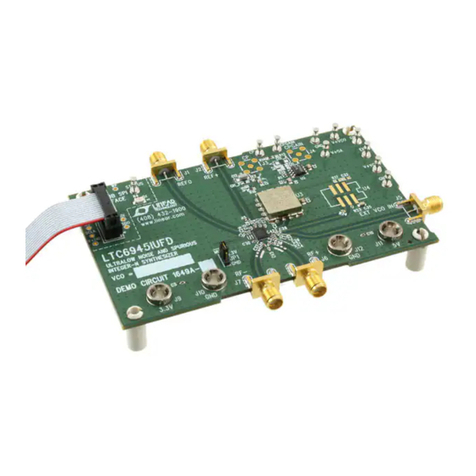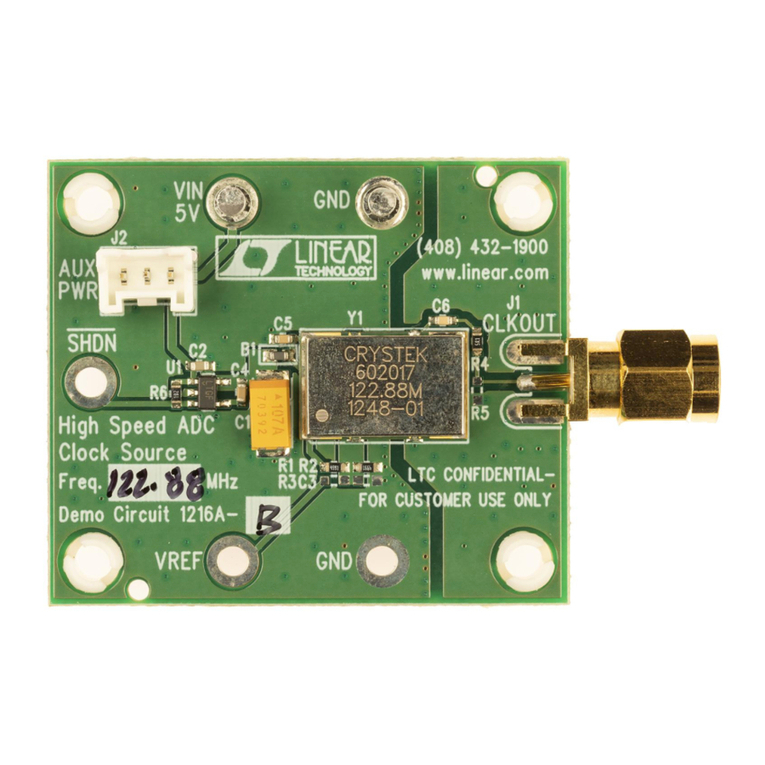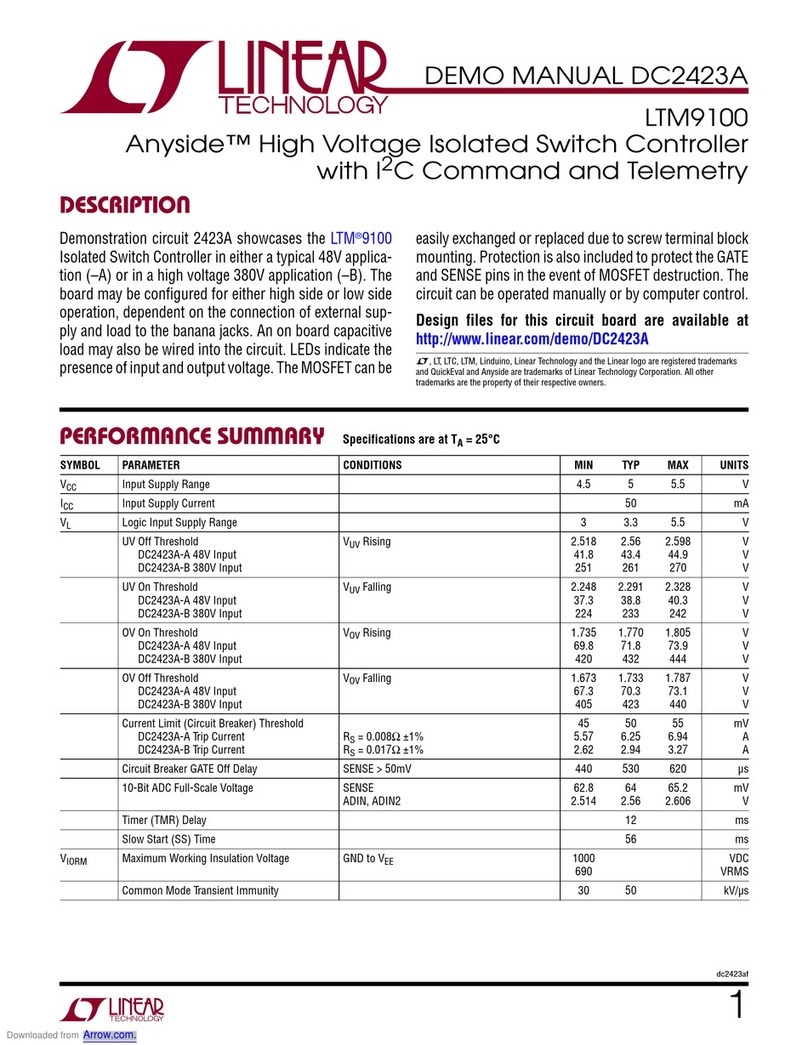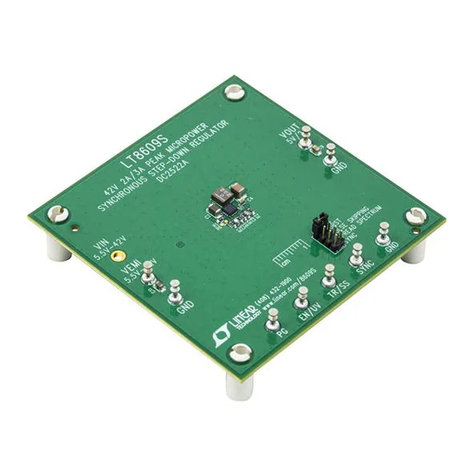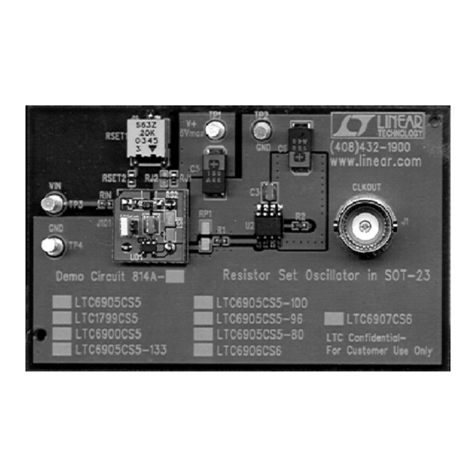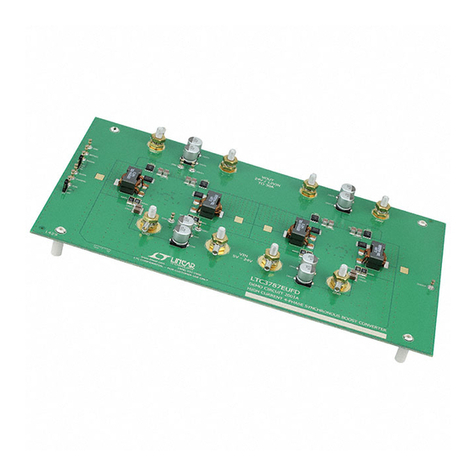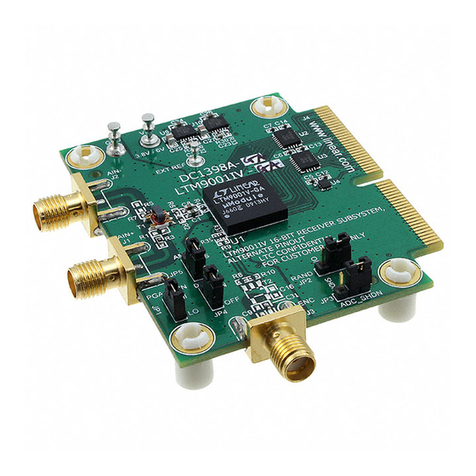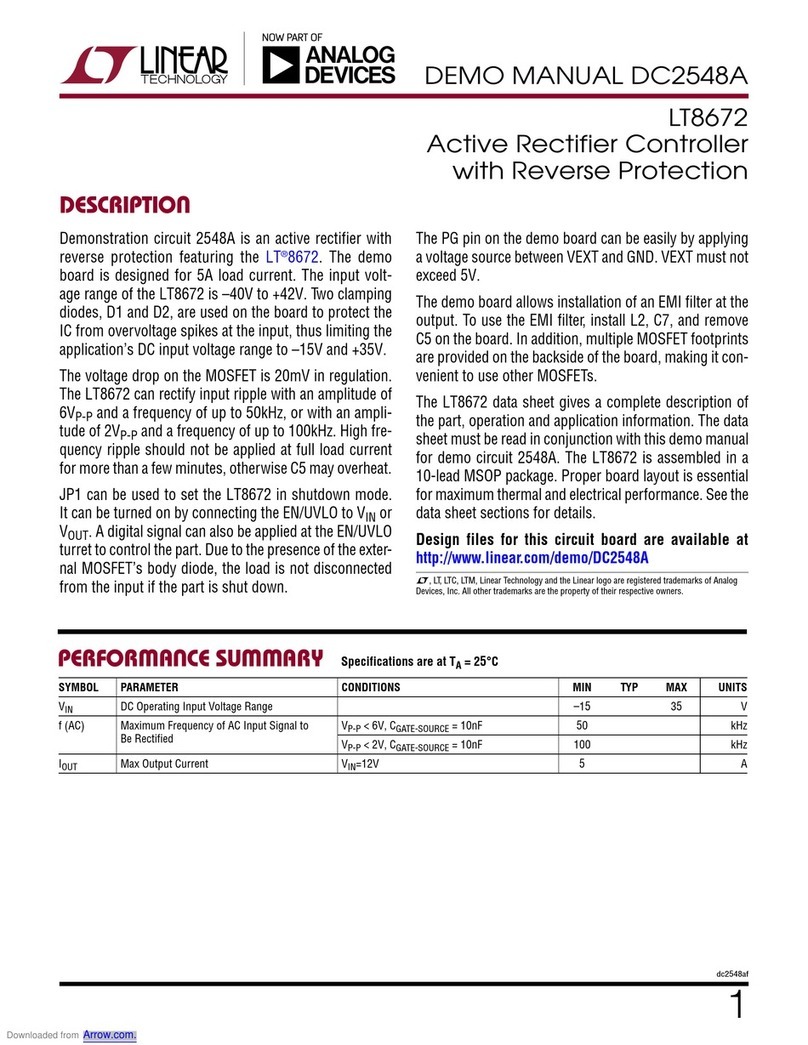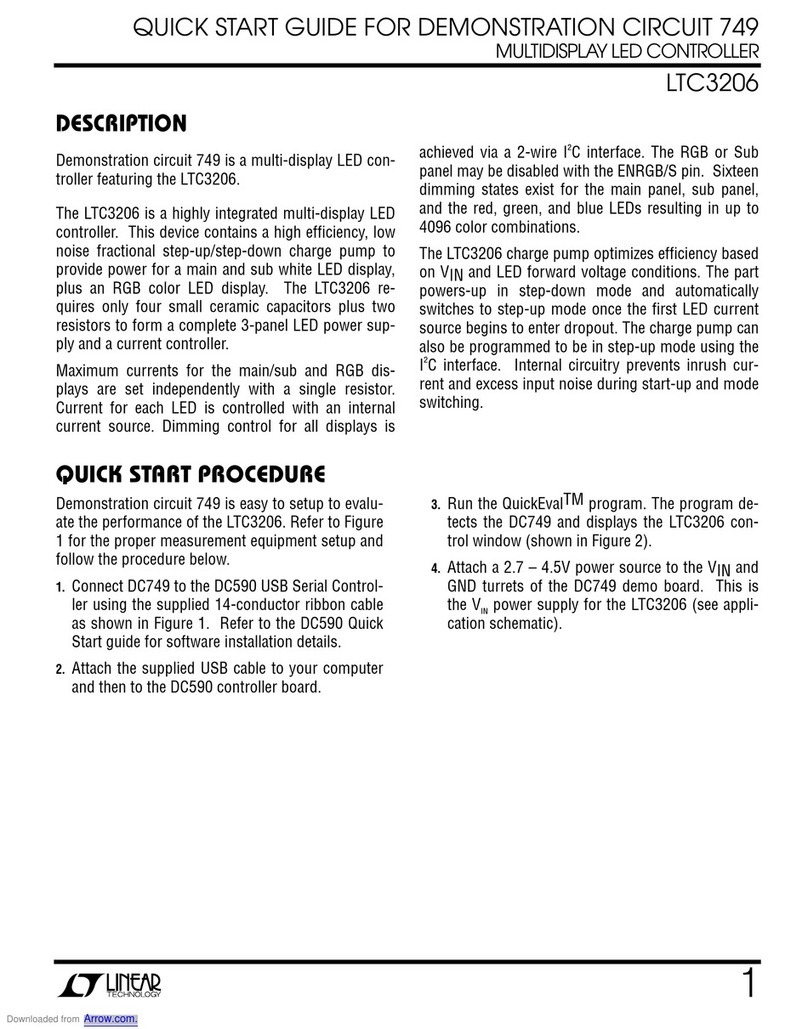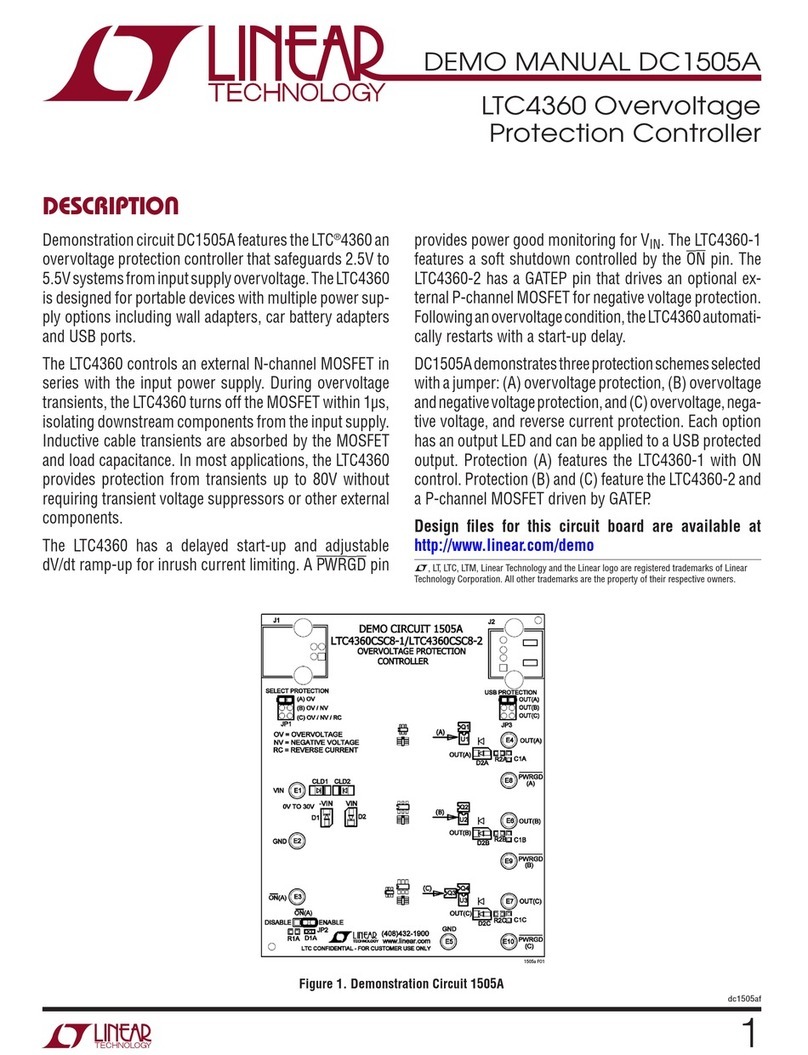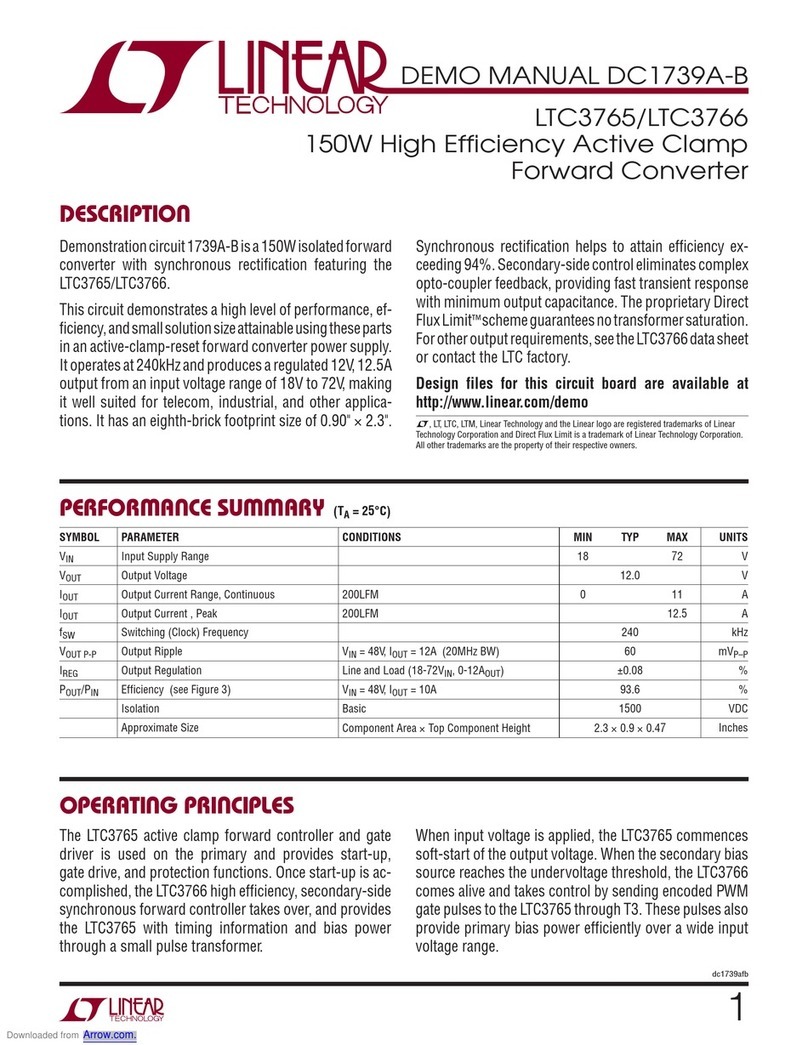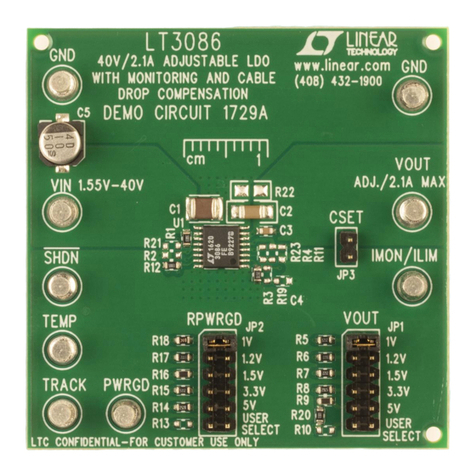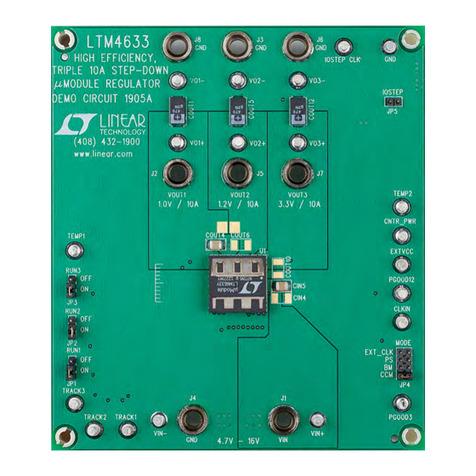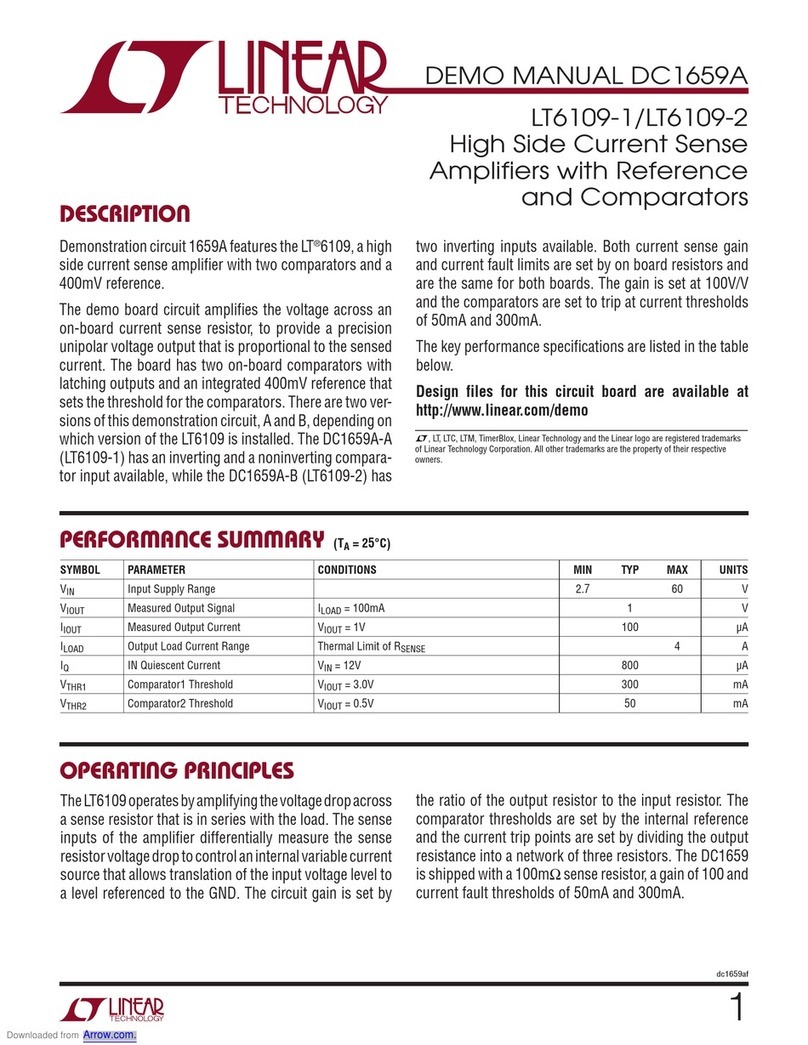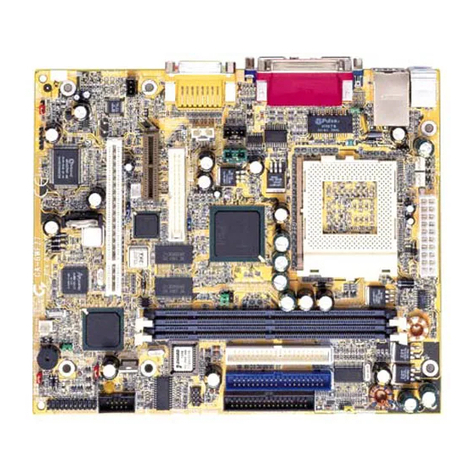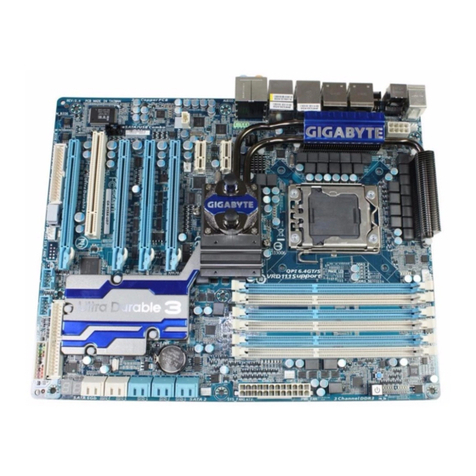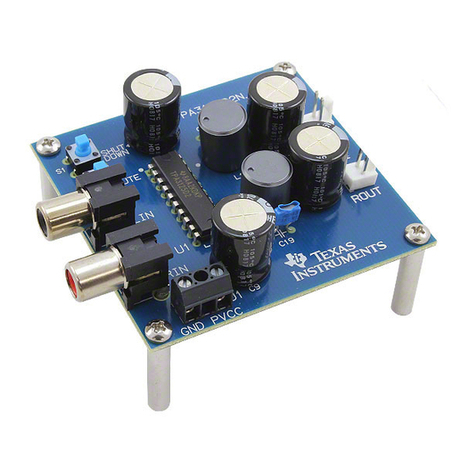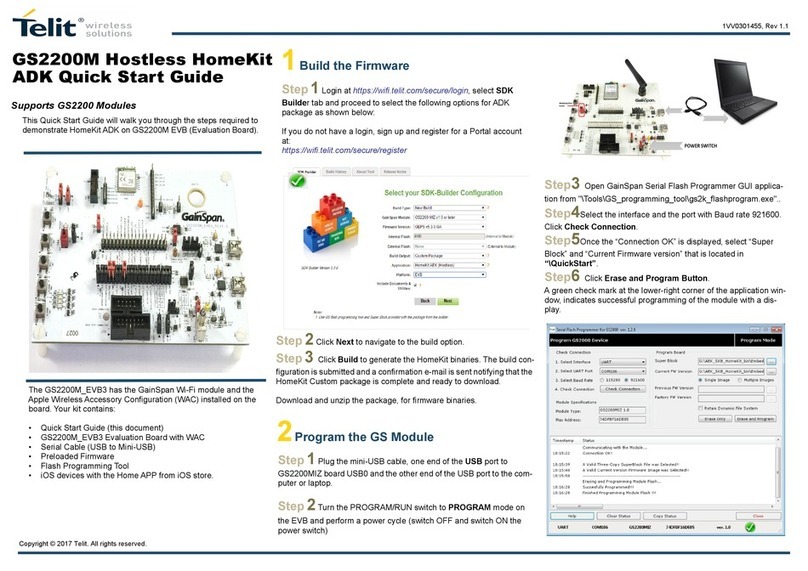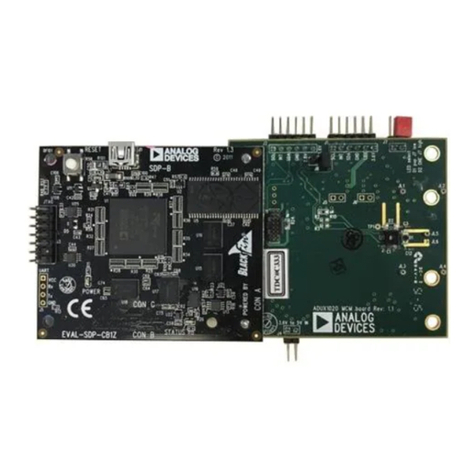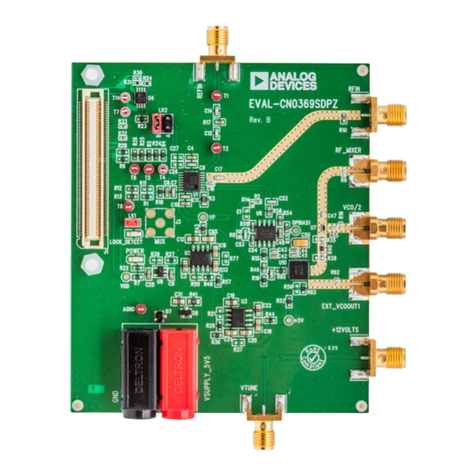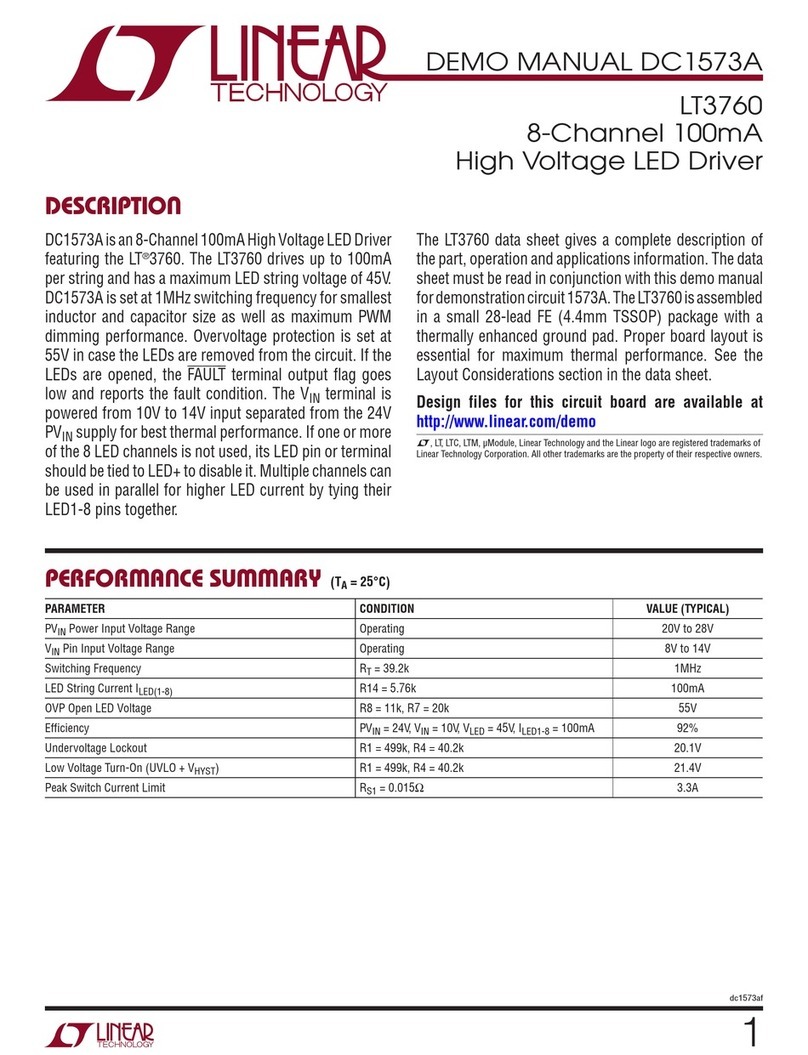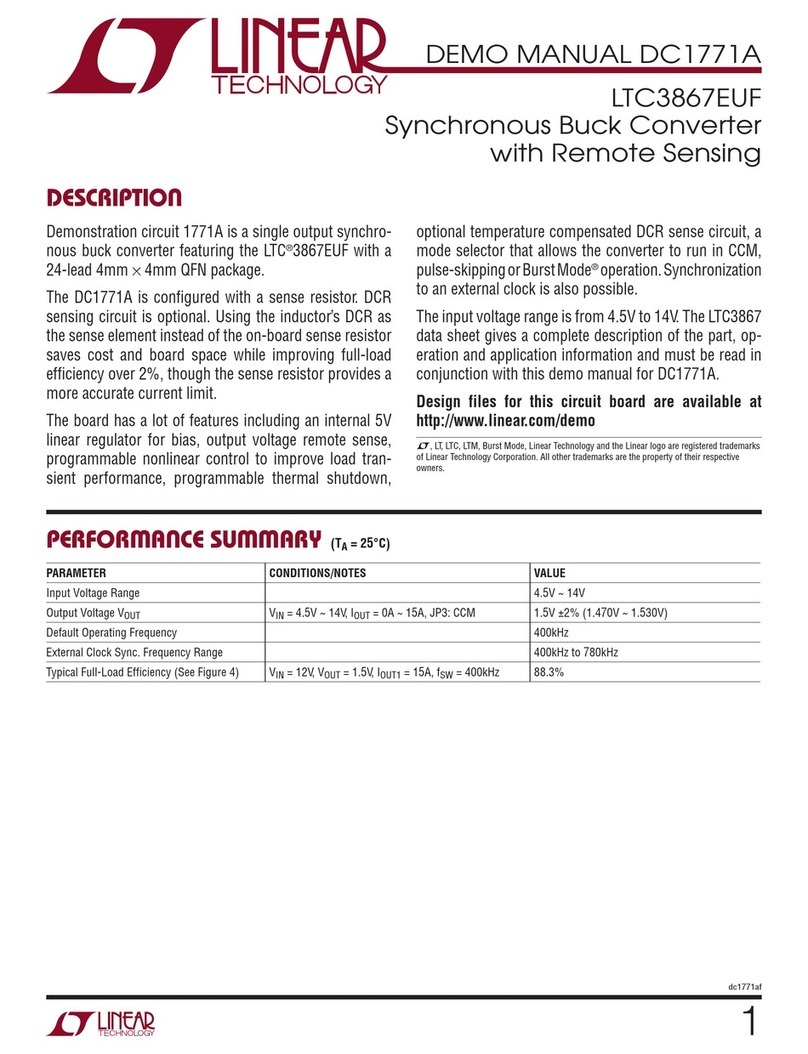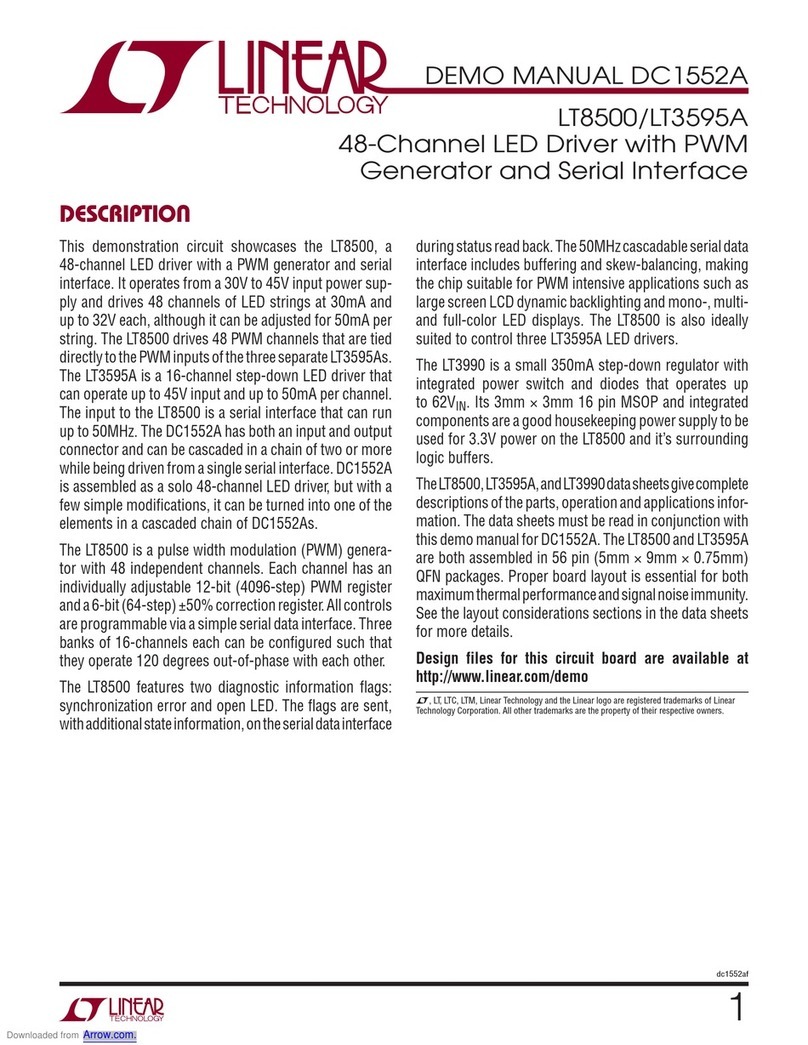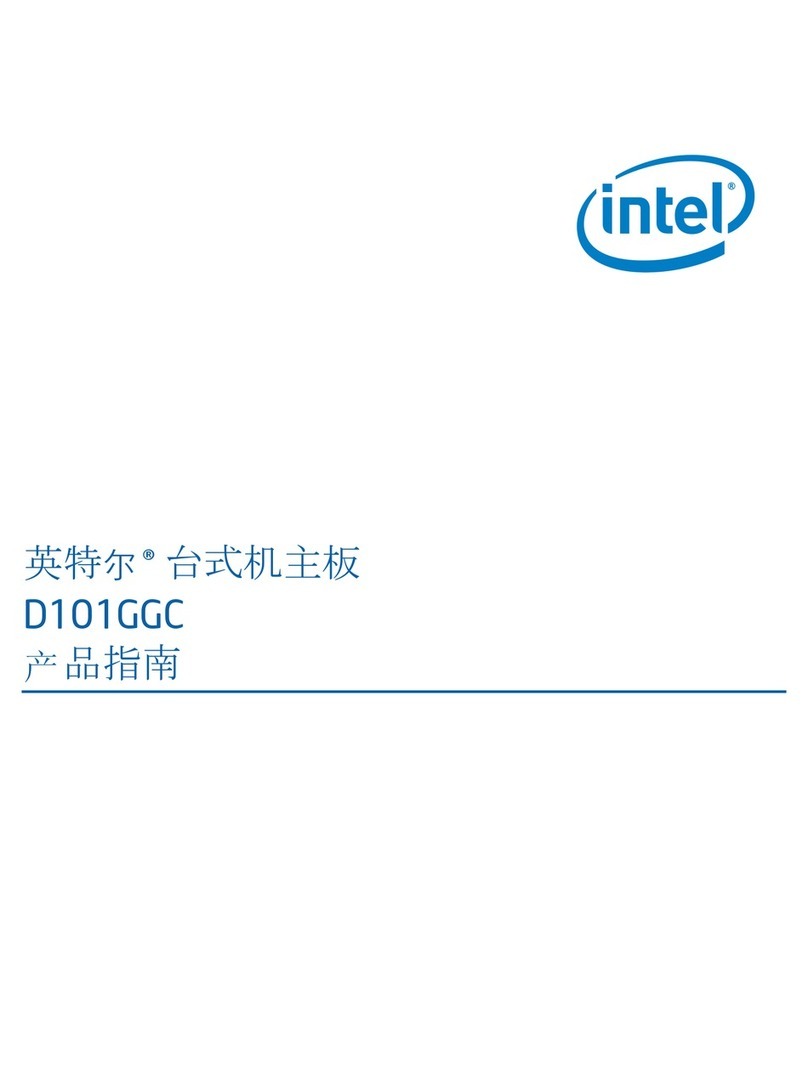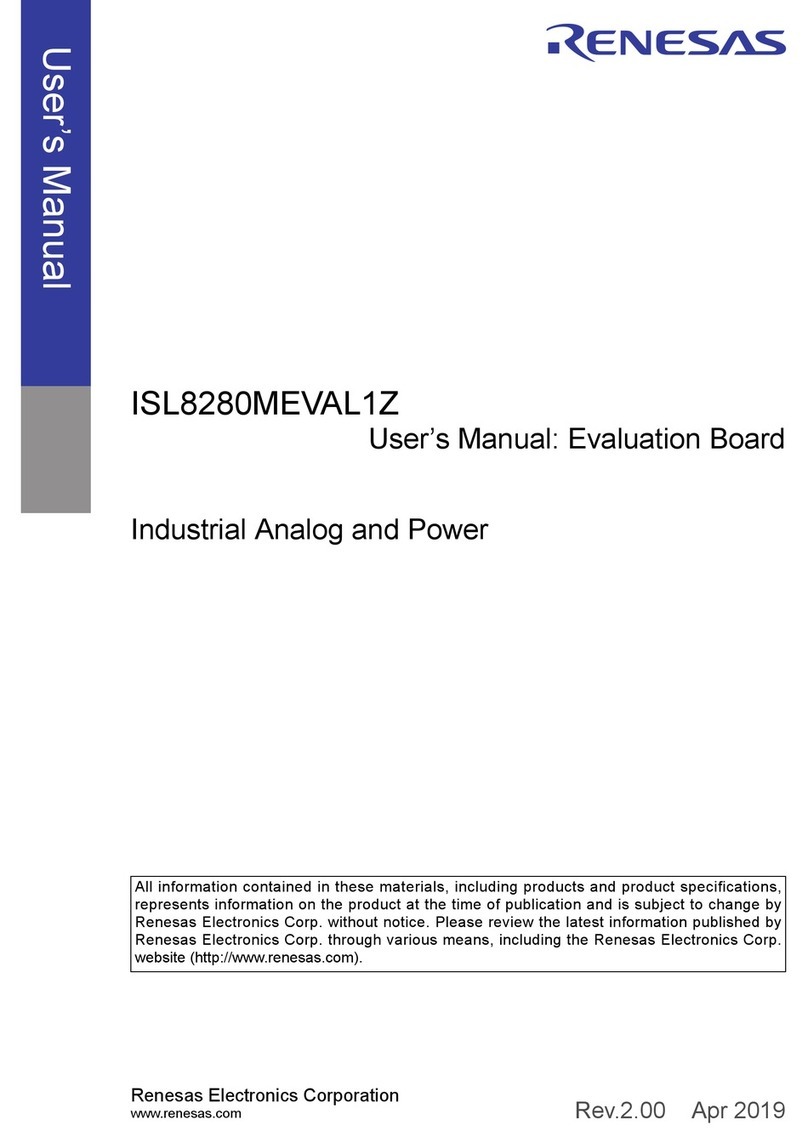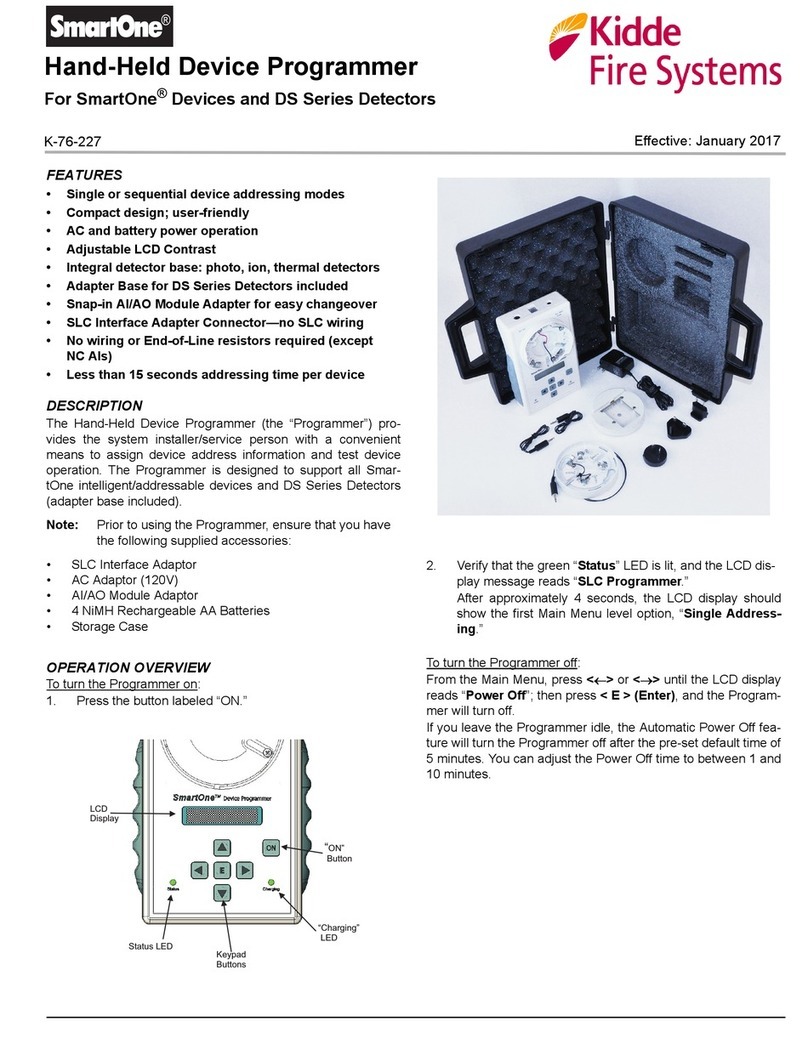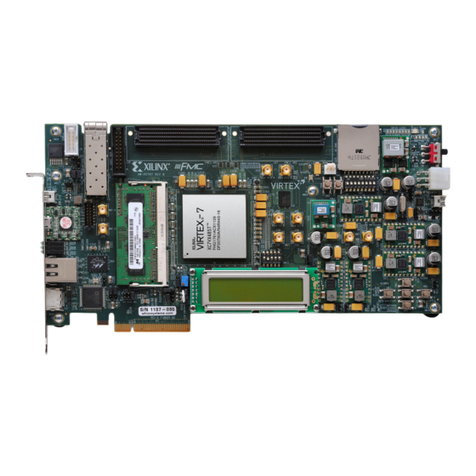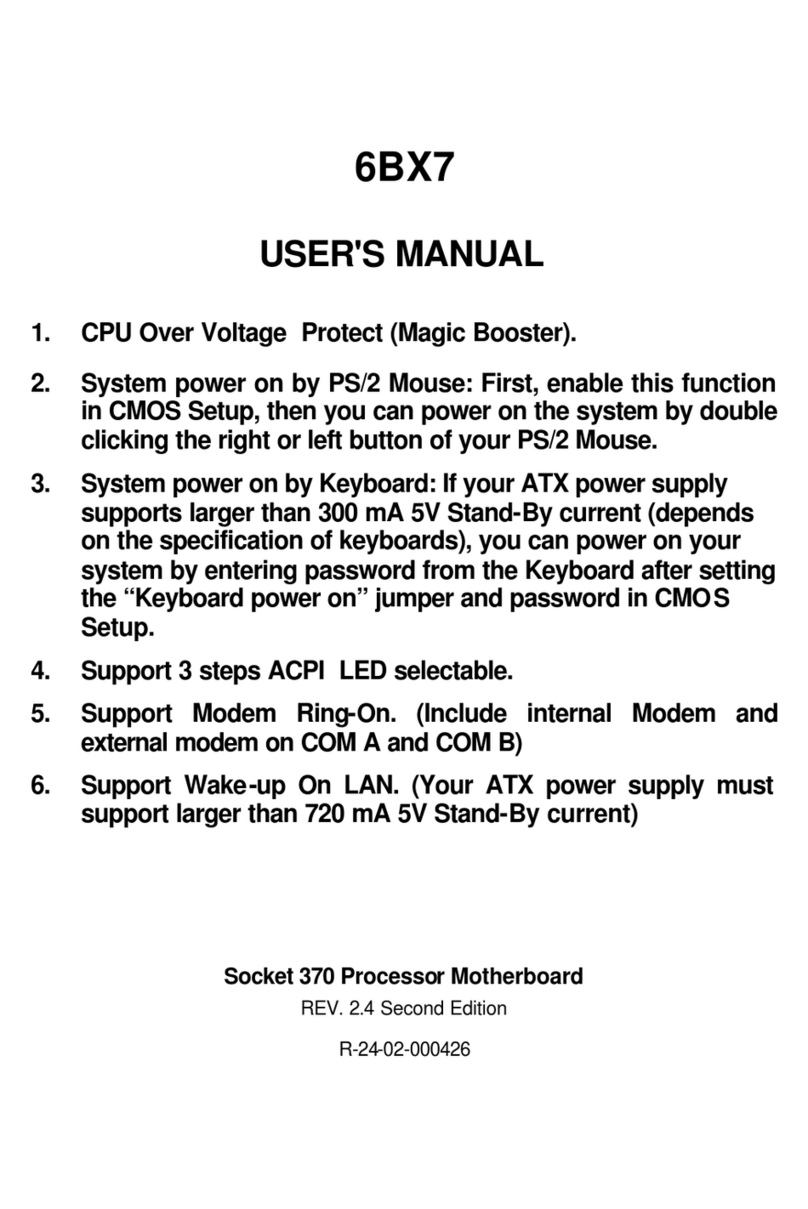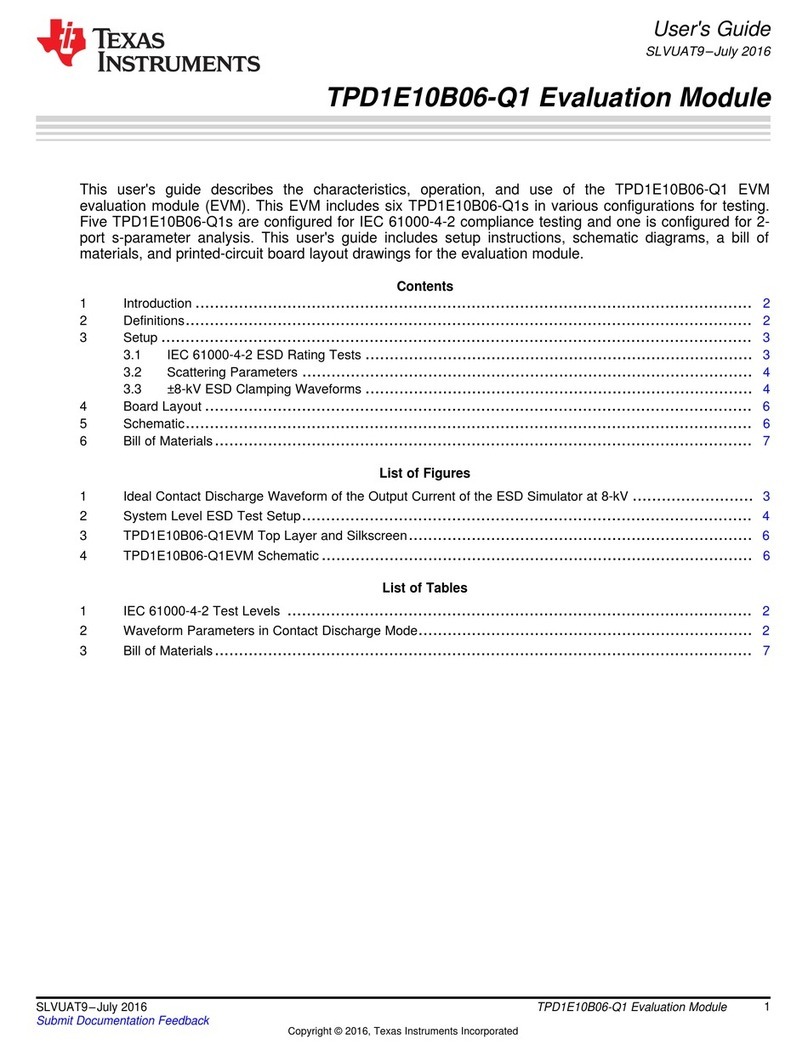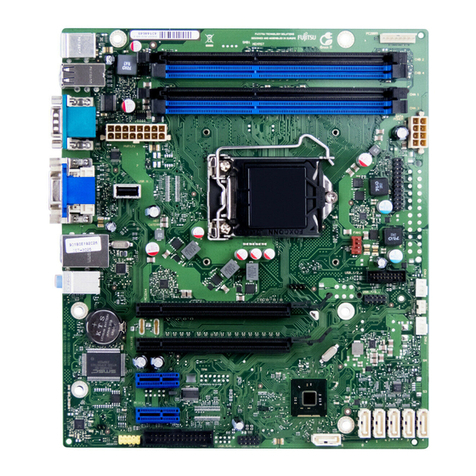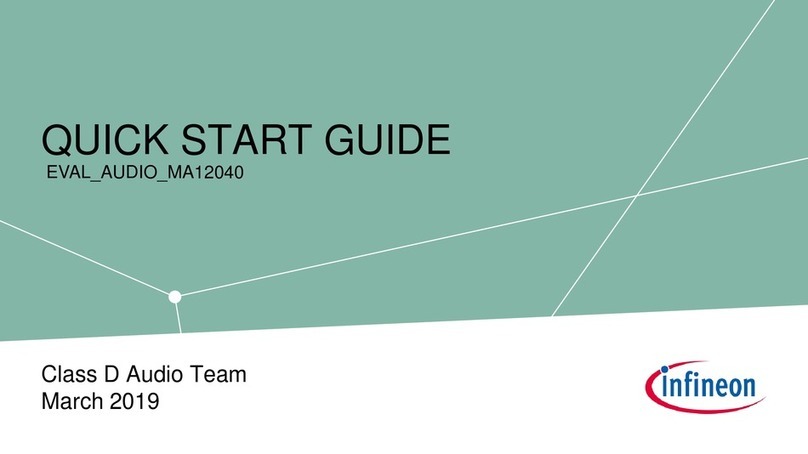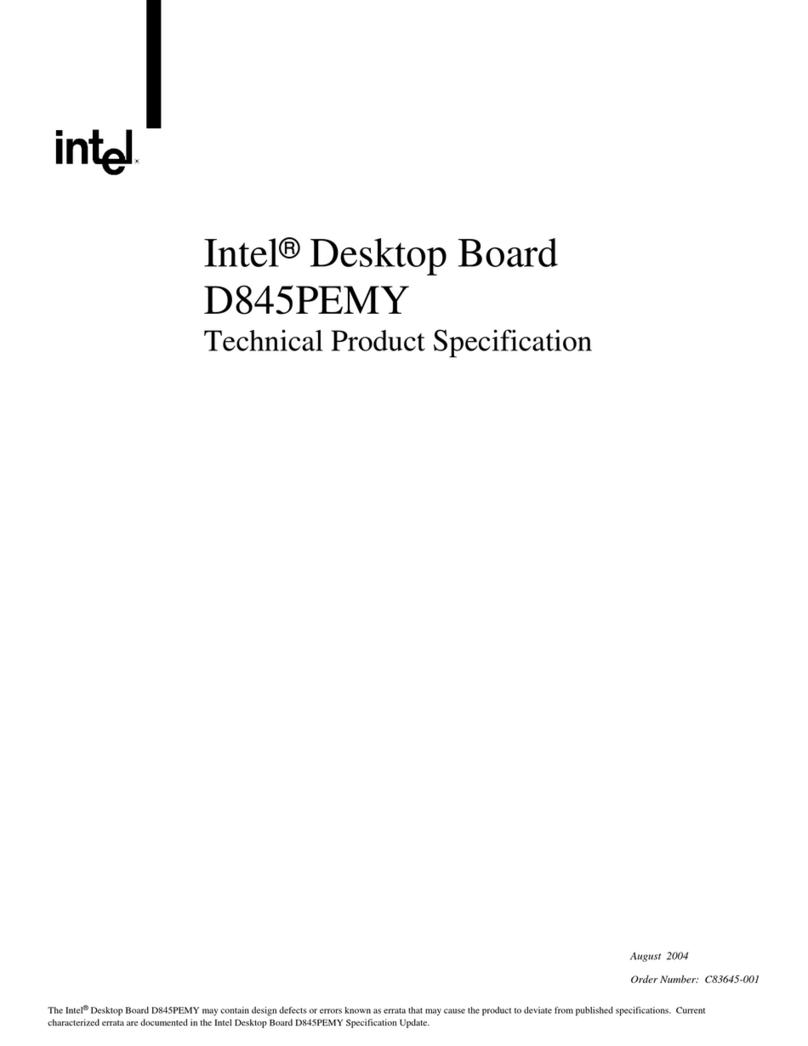
5
DEMO MANUAL DC102
50V N-CHANNEL HALF BRIDGE
OPERATION
U
floating capacitor. Thus, at a point between 90% and
100% duty cycles, the floating capacitor will be depleted,
causing a discontinuity and potential overdissipation of
the top MOSFETs.
In this demo board the built-in switching regulator of the
LT1336 comes configured as a flyback regulator, as
shown in Figure 1. To configure a flyback regulator, a
resistor,adiode,asmall1:1turnsratiotransformeranda
capacitor are needed. The maximum voltage across the
switch, assuming an ideal transformer, will be about
V
IN
+11.3V.Leakageinductanceinnonidealtransformers
will induce an overvoltage spike at the switch the instant
that it opens. These spikes are clamped using the snub-
bing network D3, C9 and R7. Using the components as
showninFigure1,theflybackregulatorwillrunataround
800kHz.Tolowerthefrequency,increasethevalueofC11;
to raise the frequency, decrease the value of C11.
Theflybackregulatorworksasfollows:whentheswitchis
on, the primary current ramps up as the magnetic field
buildsup.Themagneticfieldinthecoreinducesavoltage
onthesecondarywindingequaltoV
IN
.However,nopower
is transferred to V
BOOST
because the rectifier diode D1 is
reverse biased. The energy is stored in the transformer’s
magneticfield.Whentheprimaryinductorpeakcurrentis
reached, the switch is turned off. Energy is no longer
transferredtothetransformer,causingthemagneticfield
tocollapse.Thecollapsingmagneticfieldinducesachange
involtage across the transformer’s windings.During this
transition the Switch pin’s voltage flies to 10.6V plus a
diodeaboveV
IN
,thesecondaryforwardbiasestherectifier
diode D1 and the transformer’s energy is transferred to
V
BOOST
. Meanwhile, the primary inductor current goes to
zeroandthevoltageatI
SENSE
decaystothelowerinductor
currentthresholdwithatime constant of(R2)(C11), thus
completing the cycle.
Using the flyback regulator allows the maximum voltage
(50V)tobeappliedatthehighvoltagerail,HV.Inapplica-
tionswherethehighvoltageraildoesnotexceed40V,the
boost topology can be used. The advantage, as shown in
Figure2, is simplicity.Only aresistor,asmall inductor,a
diode and a capacitor are needed; there is no need for a
snubbercircuit.ThecurrentdrawnfromV
IN
willbehigher,
however, by a factor of V
BOOST
/V
IN
.
To reconfigure the demo board’s flyback regulator into a
boost regulator, remove the snubber circuit’s compo-
nents, C9, R7, D3 and the transformer T1. Reconnect
diodeD1 andinsertthe optionalinductor as shownin the
Board Photos. Using the components provided with the
demo board (2Ωsense resistor, 200µH inductor and 1µF
capacitor) the boost regulator will run at around 700kHz.
To lower the frequency increase the inductor value; to
increase the frequency decrease the inductor value.
The boost regulator works as follows: when the switch is
on, the inductor current ramps up as the magnetic field
buildsup.Duringthisintervalenergyisbeingstoredinthe
inductorandnopoweristransferredtoV
BOOST
.Whenthe
2Ωresistorsensesthatthepeakinductorcurrenthasbeen
reached, the switch is turned off. Energy is no longer
transferred to the inductor, causing the magnetic field to
collapse. The collapsing magnetic field induces a change
in voltage across the inductor. The Switch pin’s voltage
rises until diode D1 starts conducting. As the inductor
currentrampsdown,thelowerinductorcurrentthreshold
is reached and the switch is turned on, starting the next
cycle.
Current drawn from V
IN
is delivered to V
BOOST
. Some of
this current (~1.5mA) flows through the topside driver to
E2. This current is typically returned to ground via the
bottomMOSFETsortheoutputload.IfthebottomMOSFETs
areoffandtheoutputloadisreturnedtoHV,E2willreturn
the current to HV through the top MOSFET or the output
load. If the HV supply cannot sink current and no load
drawinggreater than 1.5mAis connected tothesupply, a
resistor from HV to ground may be needed to prevent
voltage buildup on the HV supply.
